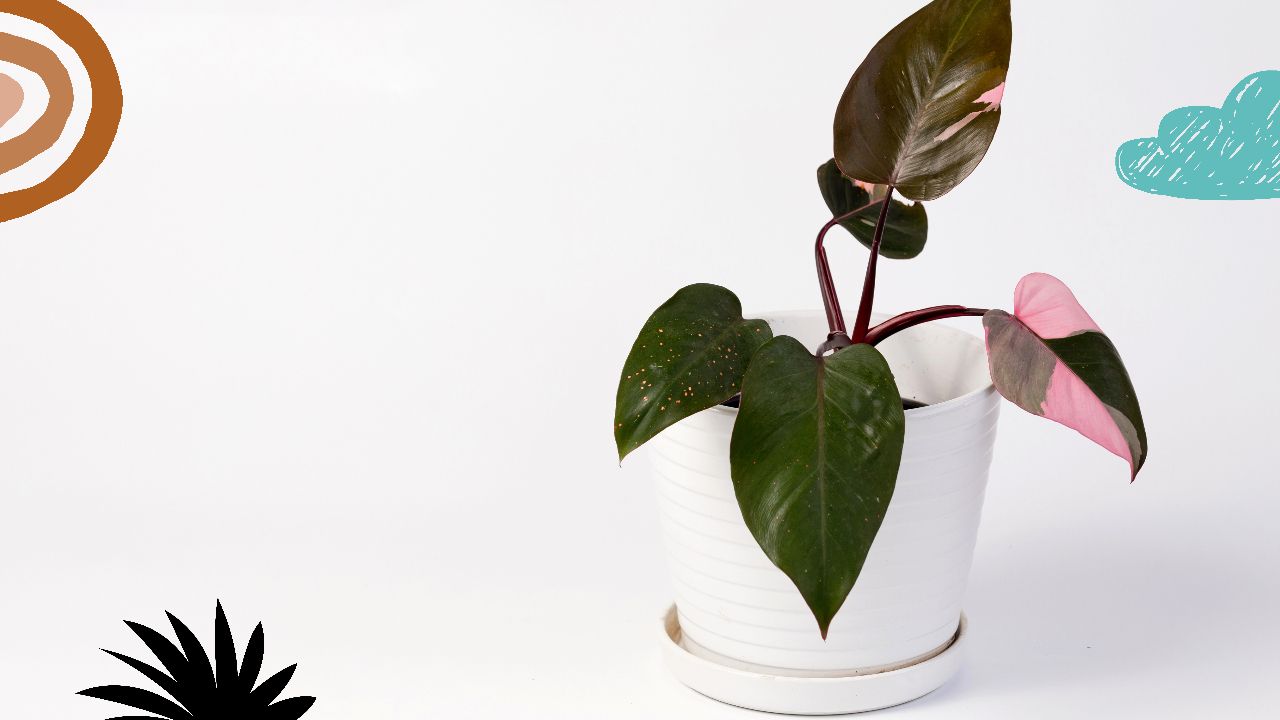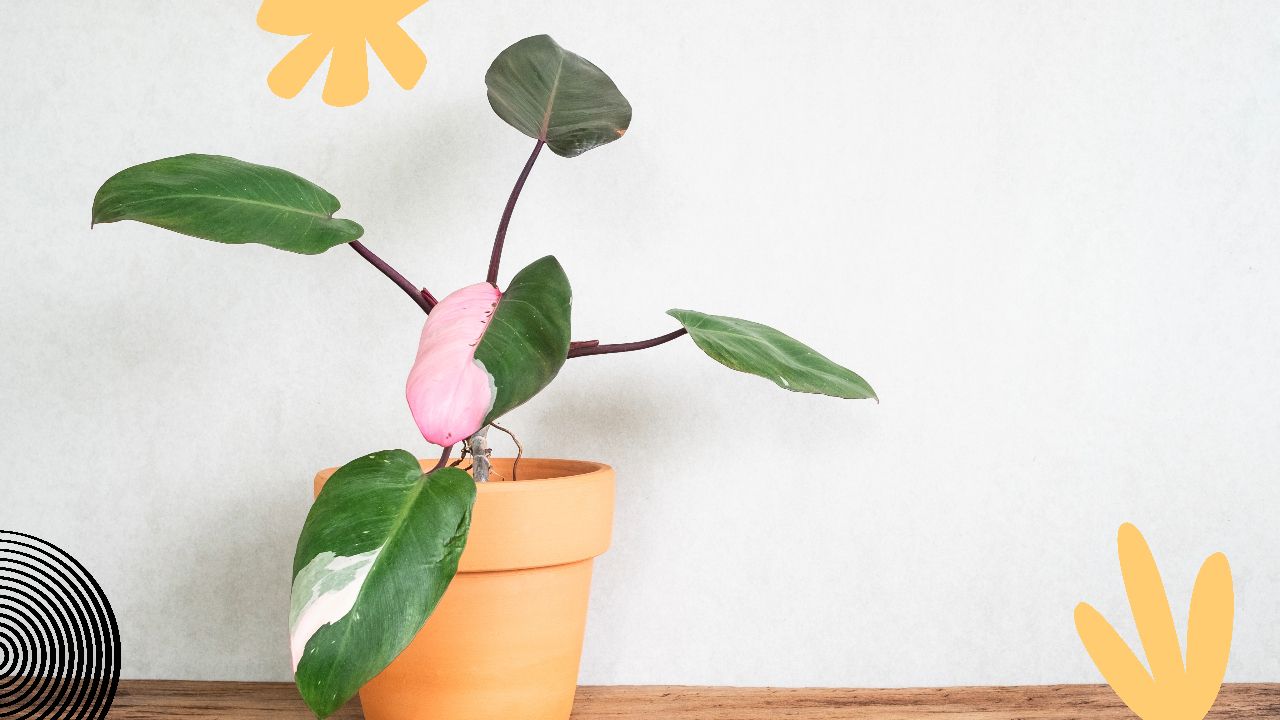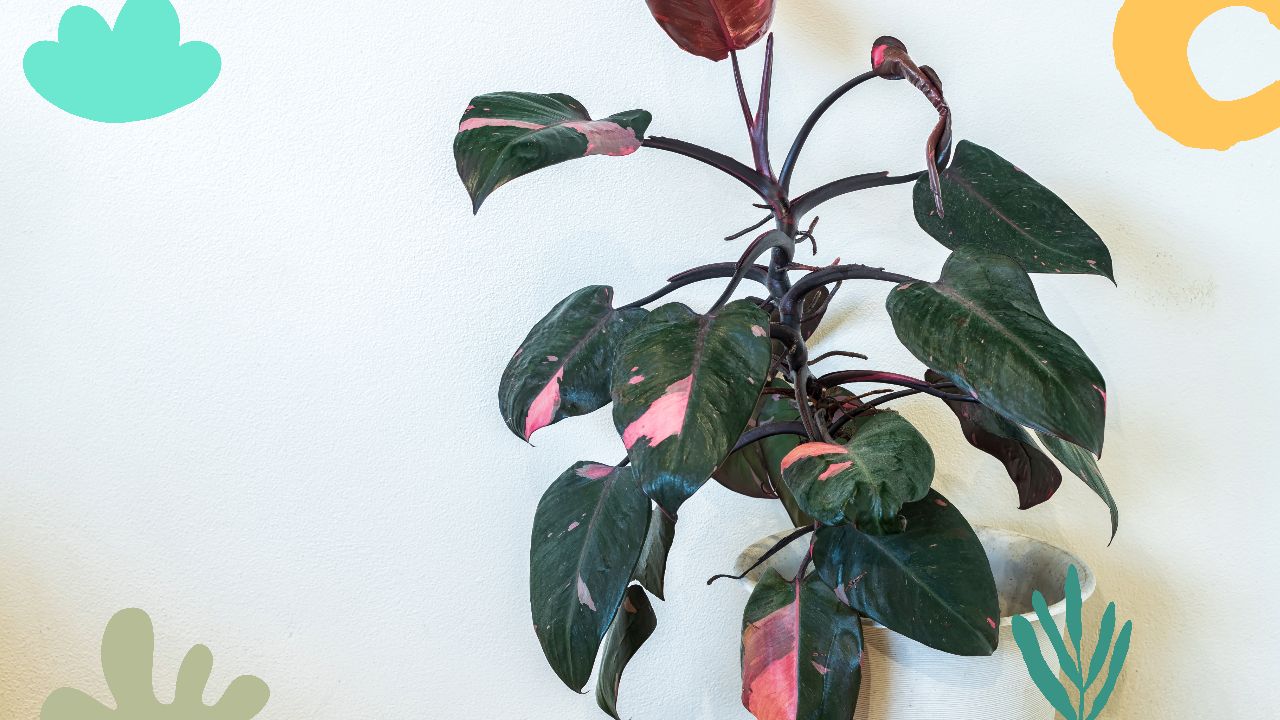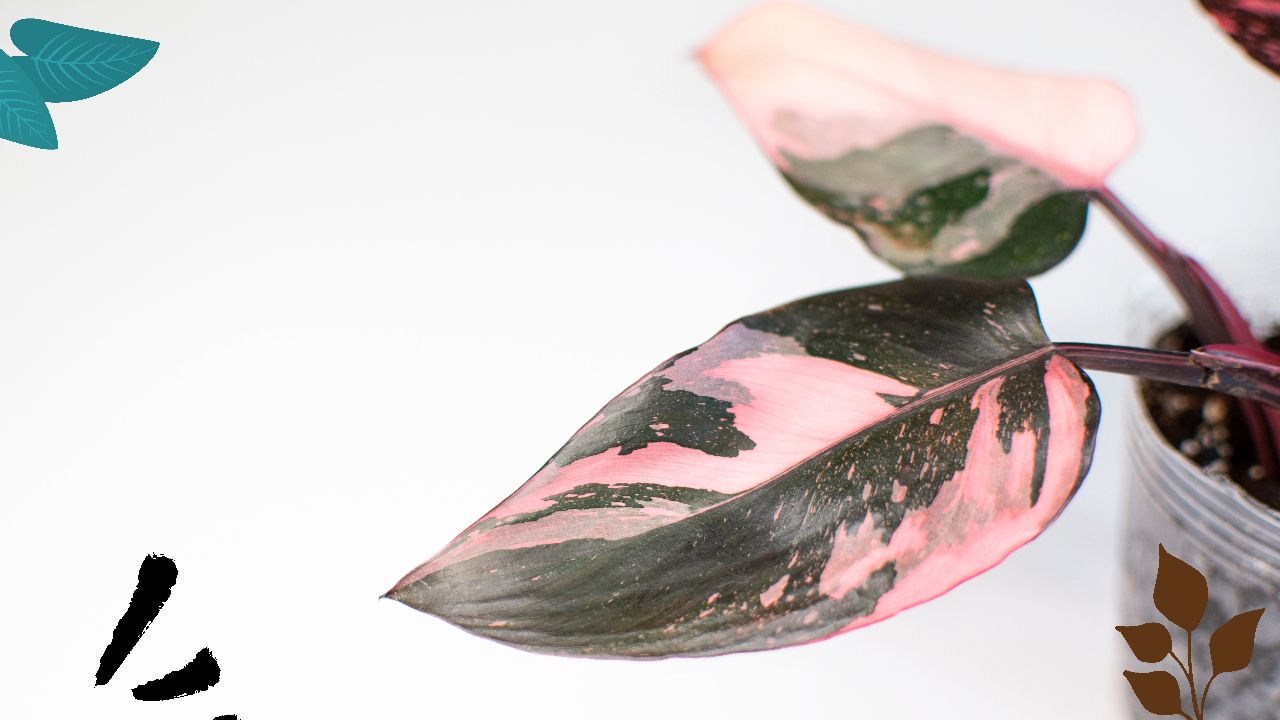The Ultimate Guide to Pink Princess Philodendron Care
By HeyHome • September 13, 2023

At a Glance: Pink Princess Philodendron Essentials
- Scientific Name: Philodendron erubescens 'Pink Princess'
- Also Known As: Blushing Philodendron, Philodendron Pink Princess
- Family: Araceae
- Plant Category: Perennial
- Mature Dimensions: Height and width both range between 2 and 4 feet
- Preferred Sunlight: Partial exposure
- Ideal Soil: Moist, well-draining loamy soil
- Soil pH Requirement: Acidic
- Flowering Season: Spring and summer
- Flower Hue: Shades of green and white
- Zones of Hardiness: 9a, 9b, 10a, 10b, 11a, 11b
- Origin: Native to South America
Join our newsletter
Stay on top of the latest in landscaping and lawn care with one valuable tip right in your inbox every Saturday morning.
Introduction: Why the Pink Princess Philodendron is a Must-Have Plant
Imagine a plant with luscious, heart-shaped leaves adorned in a vibrant dance of deep green and bubblegum pink variegation. No, you're not dreaming; you're thinking of the pink princess philodendron, a bewitching beauty that has captivated the hearts of plant lovers around the globe.
When it comes to tropical plants with a unique aesthetic, the pink princess philodendron is the undisputed star. Unlike common green-leafed houseplants, the pink princess offers a vibrant mix of colors that can turn any space into a visual spectacle. It belongs to the philodendron genus, known for its ease of care, making it not just a pretty face but also a manageable addition to your indoor garden.
If you're wondering how it stands apart from other philodendrons, let's talk briefly about the Philodendron Pink Congo. While both are remarkable plants with pink accents, the pink variegation in the pink princess philodendron is stable, thanks to natural processes. On the other hand, the pink congo's variegation is often artificially induced and tends to revert back to green over time.
From its stunning variegation to its hardy nature, this pink princess brings a regal charm to any collection. If you're drawn to pink plants, pink leaves, or anything with a splash of bright pink, your search ends here. Investing in pink princess philodendron care means investing in a show-stopping specimen that's remarkably easy to maintain. Trust us, the pink princess philodendron deserves all the attention it gets and more. It’s not just a plant; it's a statement.

Characteristics of the Pink Princess Philodendron
Botanically known as Philodendron erubescens, the pink princess philodendron is more than just another member of its expansive family. This tropical aroid takes center stage with its eye-catching features, making it a must-have for any plant aficionado.
What sets this pink beauty apart are its stunning variegated leaves, a delightful mix of deep green and bubblegum pink variegation. These heart-shaped leaves bring whimsy and color to any room, serving as living art pieces. Complementing these variegated leaves are burgundy stems, adding another layer of richness to its already mesmerizing profile.
But it's not all about aesthetics. The pink princess philodendron's unique features go beyond the surface. These colorful plants are also known for their hardiness, adapting well to a variety of indoor environments. All these characteristics make the pink princess philodendron an exceptional specimen in the world of tropical plants.
So, why settle for the ordinary when you can have a pink princess philodendron, a captivating plant that combines stunning variegation with resilience? With its unique features, this plant is not just an addition to your collection—it's a highlight.
Where Does It Come From?
If you've ever wondered about the roots (no pun intended) of your beloved Pink Princess Philodendron, you might be fascinated to know that this tropical aroid originally hails from the lush rainforests of Central and South America. With its remarkable plant characteristics, it didn't take long for the Pink Princess Philodendron to journey from its native lands to the windowsills, patios, and greenhouses of plant lovers across the globe.
But how did it make this grand journey? It's a tale of botanical exploration and passionate horticulture. Researchers and plant enthusiasts alike were captivated by the plant's vibrant pink variegation and heart-shaped leaves. Importation and cultivation efforts soon began, and now this pink beauty adorns homes and gardens from New York to Tokyo.
Its global popularity is a testament to both its striking appearance and its ability to adapt to various climates and conditions. Truly, the Pink Princess Philodendron is a cosmopolitan citizen of the plant world.

The Importance of Bright Indirect Light
When it comes to bringing out the best in your Pink Princess Philodendron, one thing is abundantly clear: the quality of light matters. Bright indirect light is the golden key that can unlock the jaw-dropping pink variegation that makes this plant so irresistibly unique.
Why is bright indirect light so critical? The science behind it is quite fascinating. Bright indirect light plays a significant role in photosynthesis, the process that the Pink Princess uses to convert light into energy. When provided with enough light, the pink variegation on the leaves intensifies, giving your Pink Princess Philodendron the stunning appearance that makes it a centerpiece in any space.
Direct sun, on the other hand, is a no-no. While you might think that more light would be beneficial, direct sun can lead to wilting leaves, yellow leaves, and an overall decrease in your plant's health. Your Pink Princess Philodendron prefers a well-lit environment, but direct sunlight can be too much of a good thing, leading to faded colors and a stressed plant.
The bottom line? If you want to encourage pink variegation, place your Pink Princess Philodendron in a spot where it receives bright indirect light for the majority of the day. West-facing windows are often a good choice, but you can also use a grow light if natural light is lacking.
With the right light conditions, you'll see your pink princesses flourish, their pink leaves a testament to your excellent Pink Princess Philodendron care. It's a straightforward step, but one that makes all the difference in achieving the bubblegum pink variegation and deep green leaves that make the Pink Princess Philodendron a remarkable plant in any collection.
Soil and Watering Requirements
So, you've secured a spot with bright indirect light for your Pink Princess Philodendron. Excellent! But don't rest on your laurels just yet. To truly unlock the potential of this rare plant, you need to focus on another crucial aspect of Pink Princess Philodendron care: the soil and watering.
Let's start with the soil. The ideal soil mixture for a Pink Princess Philodendron should provide excellent drainage while retaining just enough moisture for the plant's root ball. A mixture that includes one part orchid bark to two parts potting soil often does the trick. This soil structure not only supports balanced variegation but also promotes new growth.
Speaking of water, how much is too much? Or too little? One thing you want to avoid at all costs is root rot. The plant's root system should never be left sitting in water. That's where drainage holes come into play. Always ensure your Pink Princess Philodendron is planted in a plastic container with adequate drainage holes. This way, any excess water can easily escape, maintaining a healthy environment for the aerial roots of your plant.
Additionally, pay attention to the soil's moisture levels. If the top inch of the soil mixture is dry, it's time to water your Pink Princess Philodendron plant. Over-watering can lead to several plant diseases and is the most common cause of root rot.
In summary, the ideal soil and watering conditions can make or break your Pink Princess Philodendron. A balanced soil mixture encourages stunning variegation and new leaf development, while adequate drainage holes are a simple yet crucial step in avoiding the dreaded root rot.

Temperature and Humidity
Creating the perfect home for your Pink Princess Philodendron goes beyond just soil and light; it's also about mastering the art of temperature and humidity control. Remember, this remarkable plant is a tropical aroid, native to Central and South America. It thrives in conditions that mimic its natural habitat.
When it comes to temperature, aim for a range between 65-80°F (18-27°C). Your Pink Princess Philodendron prefers stable conditions, so avoid drastic temperature changes. Keep it away from direct drafts, like those coming from air conditioners or heaters.
Humidity is another essential factor. These tropical plants revel in higher humidity levels. The ideal range is between 60-80%. Lower levels could lead to wilting leaves, while excessively high humidity can invite plant diseases. Consider placing your Pink Princess Philodendron near a humidifier, or employ the use of a water-filled tray with pebbles to increase the ambient moisture. Misting the plant can help too, but make sure you use distilled water to avoid any mineral deposits on the leaves.
By giving due attention to both temperature and humidity, you'll create an environment where your Pink Princess Philodendron can truly flourish.
Join our newsletter
Stay ahead of the curve in all things outdoor.
Get the inside scoop on the latest landscaping, lawn care, and fencing trends with 1 actionable tip every Saturday morning.
Pink Princess Philodendron Care
Congratulations! You've joined the ranks of plant enthusiasts captivated by the jaw-dropping beauty of the Pink Princess Philodendron. But now comes the big question: How do you keep your Pink Princess healthy and maintain its stunning variegation?
One of the most critical periods is the growing season, typically spring and summer for this tropical plant. During these months, your Pink Princess Philodendron will be in full gear, sprouting new growth and vibrant pink leaves. This is also the ideal time to feed your plant with balanced liquid fertilizer. An appropriate feeding regimen supports the rich pink coloring and prevents yellow leaves, striking the right balance between nutrient-rich and overfed.
The Pink Princess Philodendron prefers a careful balance in everything, from light to moisture. Bright indirect light, for example, can enhance pink variegation while direct sun can be too harsh. Similarly, while the plant loves its soil to be kept moist, overwatering can lead to root rot, a nemesis you want to avoid.
Maintaining your Pink Princess healthy means you'll also have to be vigilant for signs of plant diseases or pests. Keep an eye out for wilting leaves or faded color as these could be indicators that the plant is not in its optimal condition. By adhering to these care guidelines, you not only ensure that your Pink Princess Philodendron remains a spectacle but also that it thrives for many seasons to come.
Ready to dive deeper into the intricate world of Pink Princess Philodendron care? Stay tuned as we delve into everything from the ideal soil mixture to the importance of drainage holes, and even how to propagate your Pink Princess through stem cuttings.

Propagating Pink Princess Philodendron
So, you've fallen in love with your Pink Princess Philodendron and can't get enough of those stunning pink leaves and variegated plants. What if we told you that you could multiply that love? Yes, propagating Pink Princess Philodendron is not only possible but also deeply rewarding.
Propagation is a fantastic way to grow Pink Princess Philodendron while encouraging the plant's famous pink variegation. Many growers find that stem cuttings, in particular, are a reliable method for producing new plants with those jaw-dropping shades of pink and deep green. Stem cuttings not only preserve the variegated leaves, but they can also lead to even more vibrant variegation in new growth.
You might wonder, why would propagating encourage variegation? Well, it's all about the genes. When you cut a stem that has stunning variegation, you're essentially cloning that part of the plant. The new Pink Princess Philodendrons that grow from these cuttings inherit this tendency toward variegation, allowing you to cultivate an entire family of these colorful plants.
With a few essential tools and some patience, you can embark on this propagation adventure and soon have baby Pink Princesses adorning your living space. Whether you're a seasoned gardener or a beginner captivated by the remarkable plant that is the Pink Princess Philodendron, this guide is your go-to resource for propagating your beloved houseplant.
So, get your stem cuttings ready and let's dive into the captivating world of Pink Princess propagation. Your green—and pink—thumb will thank you!
Common Problems and How to Solve Them
So you've invested time, effort, and love into your Pink Princess Philodendron, but you've started to notice that not everything is rosy—or should we say, pink. Don't panic! Even the most dedicated plant parents can encounter issues like wilting leaves, yellow leaves, and the dreaded root rot. Thankfully, your Pink Princess is a resilient beauty, and with the right care, you can restore its former glory.
One of the most common issues with Pink Princess Philodendron is wilting leaves. Often, this is a sign that your plant is yearning for more water. But be cautious—overwatering can lead to root rot, another frequent problem in the world of tropical plants. Root rot is a silent killer and can do irreversible damage if not addressed promptly. Good drainage and vigilance can go a long way in prevention.
Yellow leaves could be signaling various plant diseases or simply an imbalance in nutrients. Sometimes, they're an indication that your Pink Princess is receiving too much direct sun. Keep in mind, every leaf is a clue, a tiny indicator of your plant's overall health.
To keep your Pink Princess Philodendron healthy and thriving, you'll need to be a detective as much as a caretaker. From identifying symptoms to implementing solutions, this section offers a comprehensive guide to solving these common problems. Trust us, with the right knowledge and tools, you can turn around the fortunes of your Pink Princess and keep it the showstopper it's meant to be.
Frequently Asked Questions
If you've fallen in love with the Pink Princess Philodendron, you're not alone. This remarkable plant has taken the world of variegated plants by storm with its stunning pink variegation and deep green leaves. However, owning a Pink Princess isn't all just a bed of rosy leaves—this unique philodendron comes with its own set of challenges and queries. To help you on your plant parenting journey, we've compiled some of the most frequently asked questions and their answers below.
What type of light does a Pink Princess Philodendron prefer?
The Pink Princess Philodendron prefers bright indirect light. Too much direct sun can lead to wilting leaves and faded pink coloring. West-facing windows are generally ideal, but a grow light can also suffice if you don't have enough natural light.
How often should I water my Pink Princess?
Overwatering can quickly lead to root rot, a common problem with this plant. It's best to allow the top inch of the potting soil to dry out between waterings. Good drainage holes in your plastic container or pot are essential for keeping your Pink Princess healthy.
How can I encourage more pink variegation?
To encourage stunning pink variegation, make sure your plant gets enough light. During the growing season, you can also use a balanced liquid fertilizer to promote new growth and vibrant pink leaves. Keep in mind that natural processes like aging might cause some loss of color, but proper care can maximize the pink hues.
Conclusion: The Joy of Growing Pink Princess Philodendron
If you've made it this far in our Ultimate Guide to Pink Princess Philodendron Care, congratulations—you're well on your way to becoming a pink princess aficionado! This tropical aroid is a feast for the eyes, boasting vibrant pink variegation on heart-shaped leaves and burgundy stems. Its uniqueness doesn't just stop at its appearance; the Pink Princess is also a natural centerpiece that can elevate any living space.
Indeed, growing a Pink Princess Philodendron can be a bit challenging, but the rewards make every bit of care worthwhile. From its mesmerizing pink and green leaves to its ability to adapt to indoor conditions, it's a remarkable plant that offers more than just visual appeal.
Final Tips:
- Always keep it in bright indirect light to maintain that stunning pink variegation.
- Be cautious with watering to avoid root rot; good drainage holes are essential.
- Fertilize during the growing season to encourage vibrant new growth.
Remember, the Pink Princess is not just another Philodendron; it's a living piece of art that deserves your full attention and care. Happy growing!
Join our newsletter
Stay ahead of the curve in all things outdoor.
Get the inside scoop on the latest landscaping, lawn care, and fencing trends with 1 actionable tip every Saturday morning.